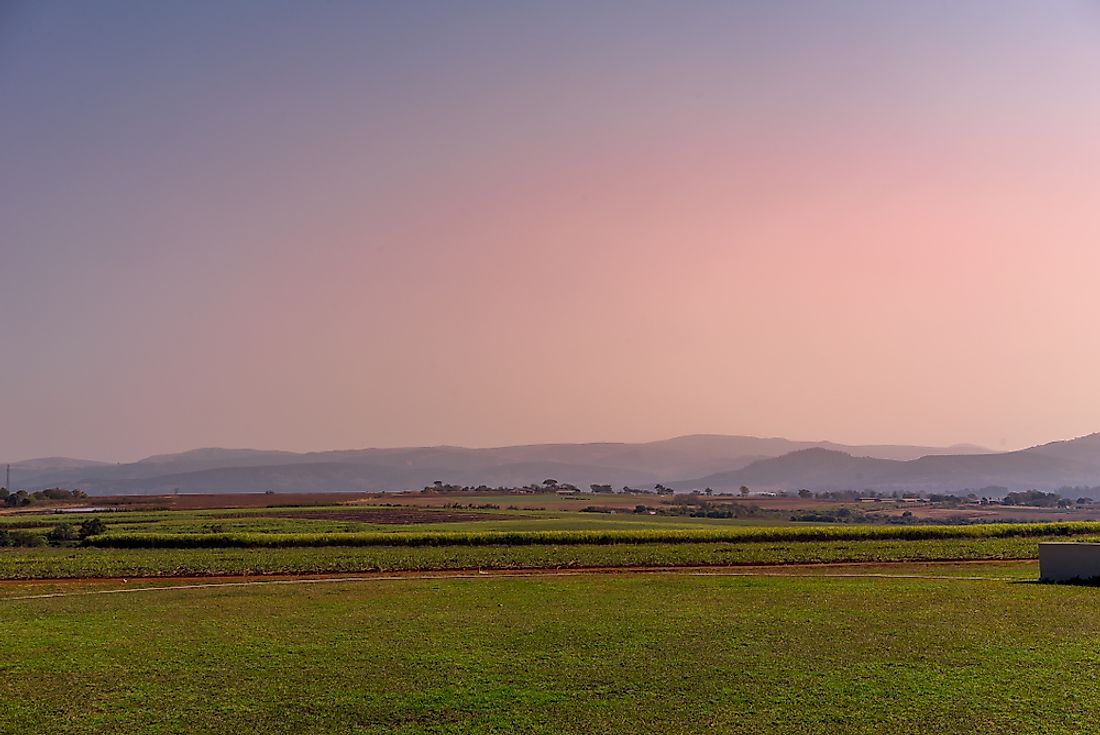What Are The Biggest Industries In Eswatini?

The Kingdom of Eswatini, formerly known as Swaziland, is a landlocked state in southern Africa bordering Mozambique and South Africa. It is a member of the Common Monetary Area (CMA) alongside South Africa, Namibia, and Lesotho. The local currency (Eswatini lilangeni) is pegged to the South African rand at par, and both currencies are legal bills in the country.
In 2018, the economy of Eswatini experienced a slow growth of about 0.5% from a high of 2% in the previous year. The economy is fairly diversified with mining, forestry, and agriculture accounting for nearly 13% of the GDP while manufacturing, including sugar and textile processing, represent 37%. The government accounts for 50% of the GDP.
Agriculture
Agriculture, forestry, and fisheries account for about 7% of the GDP but use over 71% of the land. Corn production and livestock farming are practiced in small-scale, but sugarcane, citrus fruit, tobacco, pineapple, cotton, and forestry are large scale. The major agricultural exports are citrus, cotton, and sugar. Much of the agricultural exports end up in South Africa, the European Union, the United States, and Mozambique. About 75% of the population relies on subsistence agriculture for income, but deteriorating weather patterns are worsening the already bad situation.
Sugar Industry
Eswatini is the 25th largest producer of sugar in the world and the fourth largest in Africa after South Africa, Sudan, and Kenya. Sugar impacts the GDP more than any other agricultural product. Eswatini produces about 700,000 metric tons of sugar annually. The Royal Swaziland Sugar Corporation processes two-thirds of the sugar exported and employs over 3,000 people. The European Union imports half the sugar produced in Eswatini while the rest is shipped to the United States and the neighboring states.
Mining
The King of Eswatini has the sole authority to issue mining rights in the country after consulting the Minerals Committee that he appoints. The mining industry accounts for 2% of the GDP and 2% of exports. In the early 1990s, the mining industry was a significant player in the country, but, the huge cost of production forced companies out of business. The government is seeking to resuscitate the sector to curb unemployment rates. The once thriving Bulembu asbestos mine has declined to near collapse. Iron, diamond, and gold have been discovered, but lack of investors and development policies have hindered further exploration. As of 2018, the mining industry employed less than 1,000 people.
Banking and Finance
The banking system in Eswatini is developed and comprises of the First National Bank of Swaziland, the Standard Bank of Swaziland, and Nedbank, all of which partly or wholly subsidiaries of South African banks. The banking industry has grown to feature both online and contemporary banking.
Electricity and Power
Eswatini imports much of its electricity from South Africa, but the government is seeking to change this by shifting to potential energy producing resources available in the country, including hydro and coal. The Eswatini Electricity Company produces and supplies electricity. It operates five hydropower stations and seeks to construct a coal power plant.
Infrastructure
Eswatini has developed roads linking the country to South Africa. In the 1980s, the Goba railway line made it easier to export goods through the port of Maputo in Mozambique, but conflict in the state saw Eswatini shift its exports and imports to ports in South Africa. Despite the low population, rural communities in Eswatini grapple with a lack of basic infrastructure and amenities such as health facilities and schools.











